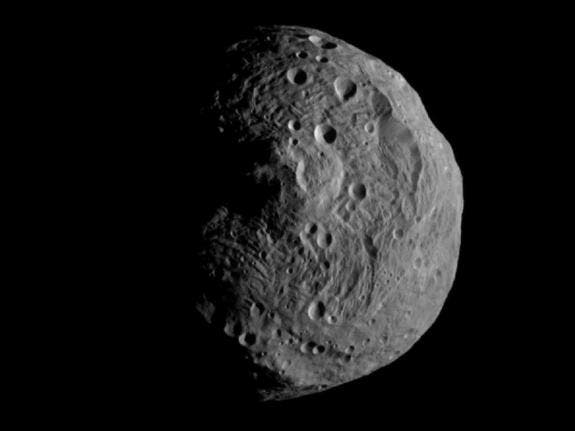This weekend, NASA‘s DAWN spacecraft finally put a lot of tension and nerves to rest after it successfully entered Vesta’s orbit, the second largest object in the Asteroid Belt.

The whole event took place at 1 a.m. EDT Saturday (0500 GMT), marking the first time a man made spacecraft entered the orbit of an object from the Asteroid Belt. Although everything was set in motion according to plan, scientists from NASA’s Dawn mission control center at the Jet Propulsion Laboratory (JPL) in Pasadena, Calif. were pretty nervous anyway since the lag between transmissions meant Dawn could not communicate with Earth while its ion thrusters were firing. Everything went smooth, though.
“Dawn slipped gently into orbit with the same grace it has displayed during its years of ion thrusting through interplanetary space,” said Marc Rayman, Dawn chief engineer and mission manager at JPL. “It is fantastically exciting that we will begin providing humankind its first detailed views of one of the last unexplored worlds in the inner solar system.”
Observed by astronomers around the world for the last 200 years, first with land telescopes and then with massive space orbiting magnifiers, this incredible photo as seen above in this article is the most detailed look upon Vesta so far, as seen by DAWN on July 17.
“We are beginning the study of arguably the oldest extant primordial surface in the solar system,” said Dawn principal investigator Christopher Russell, of UCLA, in a statement.
Vesta is thought to be the source of a large number of meteorites that fall to Earth, according to NASA, and at 330 miles (530 kilometers) wide, Vesta is actually considered a protoplanet. The huge asteroid was on its way to becoming a full-fledged rocky planet like Earth or Mars before Jupiter’s gravity stirred up the asteroid belt, astronomers believe.
NASA’s Dawn will continue to circle Vesta’s orbit for the next year, as it transmit data back home which hopefully will help scientists better understand the solar system’s early days and the processes that have formed and shaped the rocky planets. The protoplanet and Dawn are about 117 million miles away from Earth.






